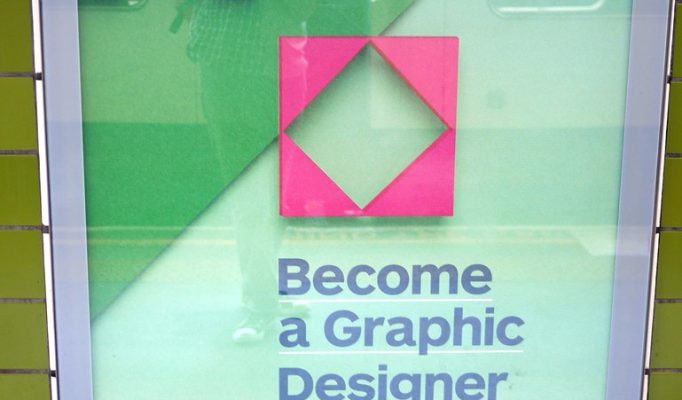Overview of Graphic Design Course
Our Graphic Design Course offers a comprehensive introduction to the world of visual communication. Designed for beginners and aspiring designers, this course covers fundamental principles, tools, and techniques used in creating compelling visual content. Through hands-on projects and expert guidance, students will develop the skills necessary to succeed in the dynamic field of graphic design.
Course Objectives
The Graphic Design Course provides comprehensive training in visual communication, combining creativity with technical skills to produce compelling visual content. It aims to equip students with the fundamentals of design principles, tools, and industry standards, preparing them for a career in graphic design or related fields.
- To introduce students to core design concepts such as color theory, typography, composition, and layout.
- To develop proficiency in using industry-standard software like Adobe Photoshop, Illustrator, and InDesign.
- To foster creativity and originality in creating visual solutions for various projects.
- To enhance students’ understanding of branding, advertising, and digital media design.
- To prepare students for professional practice through portfolio development and real-world projects.
Target Audience
The Graphic Design Course is a comprehensive program designed to equip students with essential skills and knowledge in visual communication, digital artistry, and creative problem-solving. It covers fundamental design principles, software proficiency, and practical project work to prepare learners for various roles in the design industry.
- Aspiring Graphic Designers seeking to build a solid foundation in design concepts
- Students interested in pursuing careers in advertising, branding, or digital media
- Professionals looking to enhance their creative skills and expand their portfolio
- Entrepreneurs wanting to develop their own branding and marketing materials
- Artists and illustrators aiming to incorporate digital tools into their work
Course Duration and Format
The Graphic Design Course offers comprehensive training for individuals interested in developing their skills in visual communication, creativity, and digital artistry. It covers essential concepts, tools, and techniques used in the industry, preparing students for various design projects and career opportunities.
- Course Duration: The course typically spans 6 to 12 weeks, depending on the program’s depth and schedule.
- Format: Available in both online and in-person formats, providing flexibility for learners to choose according to their preferences. Classes may include lectures, practical assignments, and project-based learning to enhance hands-on experience.
Fundamental Concepts of Graphic Design
Understanding the fundamental concepts of graphic design is essential for creating visually compelling and effective visuals. These core principles include balance, contrast, alignment, repetition, proximity, and color theory, which work together to communicate messages clearly and attractively. Mastering these foundational elements provides a strong basis for students to develop their skills and craft professional graphic designs.
Principles of Design
Fundamental concepts of graphic design form the foundation for creating visually appealing and effective digital and print communication. Understanding these concepts helps designers craft designs that convey messages clearly and attractively. Principles of design guide the arrangement and organization of visual elements to achieve harmony, balance, and emphasis in a composition.
- Line: The basic element that defines shapes, creates textures, and guides the viewer’s eye across the design.
- Shape: Enclosed areas created by lines or color, used to create icons, symbols, or compositional structures.
- Color: Influences mood and emotional response; effective use enhances visual interest and communicates meaning.
- Space: The area around and between elements, including positive and negative space, which affects composition and clarity.
- Texture: Adds depth and tactile quality, making designs more engaging and realistic.
- Typography: The art of arranging type, crucial for readability and aesthetic appeal.
- Balance: Distributing visual weight evenly to create stability within a design.
- Contrast: Juxtaposing different elements to highlight important aspects and improve readability.
- Emphasis: Highlighting a particular element to draw attention to the focal point.
- Alignment: Arranging elements in a way that creates order and organization.
- Repetition: Reusing elements to establish consistency and unity.
- Proximity: Grouping related items together to create a cohesive visual structure.
Color Theory
Fundamental concepts of graphic design are essential principles that guide the creation of visually appealing and effective designs. These include balance, contrast, alignment, hierarchy, proximity, repetition, and simplicity, which work together to communicate messages clearly and attractively.
Color theory in graphic design involves understanding how colors interact, evoke emotions, and influence perception. It encompasses concepts such as the color wheel, color harmony, and color schemes like complementary, analogous, and triadic. Proper use of color enhances visual interest, creates emphasis, and establishes mood and brand identity.
Typography Basics
Understanding the fundamental concepts of graphic design is essential for creating visually compelling and effective designs. This encompasses elements such as balance, contrast, alignment, repetition, proximity, and space, which work together to organize information and communicate messages clearly. Mastering these principles helps designers craft layouts that attract attention and guide viewers through the content seamlessly.
Typography basics are a crucial aspect of graphic design, focusing on the art of arranging text to make written language visually engaging. Key typographic concepts include font selection, hierarchy, legibility, and spacing. Choosing appropriate typefaces and sizes ensures readability, while variations in weight and style can create emphasis and structure within a design. Proper use of typography enhances the overall aesthetic and impact of visual communication.
Layout and Composition
Understanding the fundamental concepts of graphic design, layout, and composition is essential for creating visually appealing and effective designs. These concepts serve as the foundation for communicating ideas clearly and engagingly through visual media. Key principles include balance, contrast, alignment, hierarchy, and proximity, which help organize content and direct the viewer’s attention. Layout refers to the arrangement of text, images, and other elements within a design, ensuring a cohesive and functional structure. Composition involves the deliberate positioning of elements to achieve aesthetic harmony and visual flow. Mastering these core ideas enables designers to craft compelling visuals that convey messages effectively and enhance the overall user experience.
Tools and Software
Tools and software are essential components in the field of graphic design, enabling artists and designers to transform their creative ideas into visually compelling works. With a wide range of applications available, from beginner-friendly programs to professional-grade software, mastering these tools is crucial for success in the industry. Understanding how to utilize these resources effectively can greatly enhance the quality and efficiency of your design projects.
Adobe Photoshop
Adobe Photoshop is a vital tool for graphic design students, offering a comprehensive platform for image editing, manipulation, and creation. It provides a wide range of features such as layers, masks, filters, and adjustment tools that enable designers to produce high-quality visual content. Mastering Photoshop enhances a student’s ability to develop professional logos, banners, social media graphics, and photo compositions. As a core software in graphic design courses, it equips learners with the essential skills to bring their creative ideas to life and prepares them for various design industry applications.
Adobe Illustrator
Adobe Illustrator is a versatile tool essential for aspiring graphic designers, offering advanced features for creating vector art, logos, icons, and detailed illustrations. Its intuitive interface and powerful tools enable users to design with precision and flexibility, making it a key component of any graphic design course. Students learn to harness Illustrator’s capabilities to develop professional-quality artwork that can be scaled without loss of quality. Mastery of this software enhances creative expression and prepares students for diverse design projects across various industries.
Other Design Tools
In a comprehensive graphic design course, students explore a variety of tools and software to develop their creative skills. Essential programs like Adobe Photoshop and Illustrator are fundamental for image editing and vector design, allowing for detailed customization and professional-quality output. Alongside these, other design tools such as CorelDRAW, Canva, and Affinity Designer provide alternative options that cater to different workflow preferences and project needs. Additionally, students learn to utilize project management and collaboration software like Adobe XD and Figma, which facilitate UX/UI design and teamwork. Mastery of these tools enables aspiring designers to bring their creative visions to life effectively and efficiently.
Design Process and Workflow
The design process and workflow are essential components of creating compelling and effective graphic designs. They provide a structured approach that guides designers from initial concept to final product, ensuring consistency, efficiency, and creativity throughout the project. In this course, you’ll learn how to develop a seamless workflow that enhances your productivity and elevates your design work.
Research and Inspiration
The design process and workflow in graphic design are essential for transforming ideas into visually compelling solutions. It begins with thorough research and gathering inspiration to understand the project’s context and target audience. This foundational step informs the creative direction and helps identify key concepts. Following research, designers brainstorm and develop initial sketches or concepts, iterating through multiple drafts. This phase emphasizes organized workflow, time management, and effective communication with clients or team members. Ultimately, a well-structured process ensures a cohesive and innovative final design that meets the project’s objectives.
Sketching and Ideation
In a graphic design course, understanding the design process and workflow is essential for creating effective visual solutions. This process typically begins with research and brainstorming, where designers gather inspiration and define project goals. Following this, sketching and ideation play a crucial role in translating ideas into tangible concepts. Sketching allows for quick experimentation with different shapes, layouts, and styles, fostering creativity without the constraints of digital tools. Ideation involves generating multiple concepts, refining the best ones, and exploring various possibilities to ensure innovative and practical design outcomes. Emphasizing a structured workflow helps designers stay organized and efficient, ultimately leading to compelling and well-crafted visual designs.
Digital Design and Refinement
The design process and workflow in graphic design serve as a structured approach to transforming ideas into visual solutions. It begins with research and conceptualization, where designers understand the project requirements and target audience. This is followed by brainstorming and sketching to explore various ideas, and then moving into digital design using tools like Adobe Photoshop or Illustrator. Refined iterations are created through continuous feedback and testing, ensuring the design effectively communicates its intended message. Digital design allows for precise adjustments, color harmony, and layout optimization. The refinement phase involves fine-tuning elements such as typography, imagery, and overall composition, leading to a polished final product. Mastering this process is essential for delivering cohesive, impactful graphic designs that meet client expectations and project goals.
Finalization and Output
The design process and workflow are essential components of a successful graphic design course, guiding students through structured stages that ensure clarity, creativity, and professionalism. Finalization and output involve refining designs and preparing them for delivery across various mediums, ensuring high quality and consistency.
- Define project objectives and gather requirements to establish a clear direction.
- Research and inspiration collection to inform design concepts.
- Concept development, sketching, and creating initial drafts to explore ideas.
- Refinement of chosen concepts through feedback and iterative improvements.
- Design execution using appropriate software tools, focusing on aesthetics, legibility, and composition.
- Final review and approval to ensure all project goals are met and errors are corrected.
- Preparation of final files, including formatting, color calibration, and resolution settings.
- Output or delivery, which may involve printing, digital formats, or cross-media adaptation.
Throughout the process, students learn the importance of organization, time management, and attention to detail, all vital for producing professional-quality graphic design work that effectively communicates the intended message.
Practical Projects and Assignments
Practical projects and assignments are essential components of a graphic design course, providing students with hands-on experience to apply their creativity and technical skills. These real-world tasks help learners develop a portfolio, improve problem-solving abilities, and gain confidence in their design capabilities. Engaging in practical work bridges the gap between theoretical knowledge and professional practice, preparing students for successful careers in the dynamic field of graphic design.
Logos and Brand Identity
Practical projects and assignments are essential components of a graphic design course, offering students hands-on experience to apply theoretical knowledge in real-world scenarios. These projects help develop skills in creativity, problem-solving, and technical execution, preparing students for professional design challenges. Working on diverse assignments such as branding campaigns, poster design, and packaging solutions enables students to build a versatile portfolio and gain confidence in their abilities.
Logos and brand identity are foundational elements taught within a graphic design course, emphasizing the importance of visual communication in establishing a company’s recognition and values. Students learn to craft memorable logos that effectively symbolize a brand’s personality, while also developing comprehensive brand identity systems that include color schemes, typography, and visual styles. These skills are crucial for creating cohesive and impactful brand presentations that resonate with target audiences.
Posters and Flyers
Practical projects and assignments are a vital part of a graphic design course, offering students the opportunity to apply theoretical knowledge to real-world scenarios. These tasks help develop technical skills, creativity, and problem-solving abilities essential for the profession. By working on diverse projects, students learn to communicate ideas visually and effectively.
Creating posters and flyers is a fundamental component of such a course, allowing students to experiment with layout, typography, color schemes, and imagery. These assignments foster an understanding of designing for different audiences and purposes, emphasizing clarity and aesthetic appeal. Through these practical exercises, students enhance their portfolio and prepare for professional design challenges.
Web and App Design
Practical projects and assignments are essential components of a graphic design course, providing students with hands-on experience in web and app design.
- These projects enable students to apply theoretical knowledge to real-world scenarios, enhancing their problem-solving skills.
- Assignments may include designing website layouts, creating user interfaces for mobile apps, and developing branding elements for digital platforms.
- Students learn to work with design tools such as Adobe XD, Figma, and Photoshop to produce professional-quality work.
- Collaborative projects simulate industry environments, encouraging teamwork and communication skills.
- Feedback from instructors and peers helps refine design concepts and improve technical proficiency.
- Completing these practical tasks prepares students for freelance work, internships, and future employment in the web and app design industry.
Packaging Design

Practical projects and assignments are essential components of a comprehensive graphic design course, providing students with hands-on experience to apply theoretical knowledge. These projects often include creating various visual materials such as logos, posters, and social media graphics, enabling students to develop their creative skills and technical proficiency.
Packaging design is a key area within graphic design courses, focusing on the development of effective and attractive packaging solutions that communicate the brand identity and appeal to target consumers. Through these assignments, students learn the importance of functionality, aesthetics, and sustainability in packaging, preparing them for real-world design challenges.
Skill Development and Portfolio Building
Skill development and portfolio building are essential components for aspiring graphic designers aiming to excel in the competitive creative industry. Through targeted courses, individuals can enhance their technical abilities and cultivate a unique style that sets them apart. Building a strong portfolio showcases their best work, demonstrating their capabilities to potential clients and employers, and serves as a vital tool for career growth in graphic design.
Creative Thinking
Skill development and portfolio building are essential components of a comprehensive graphic design course. As students enhance their technical skills and master industry-standard tools, they also create a diverse range of projects that showcase their creativity and versatility. Developing a strong portfolio not only demonstrates technical proficiency but also reflects a designer’s unique style and problem-solving abilities.
Creative thinking plays a crucial role in graphic design, enabling students to approach challenges with innovative ideas and fresh perspectives. Courses that encourage experimentation and ideation help learners push boundaries and produce original work. Fostering creativity ensures that future designers can adapt to evolving trends and deliver compelling visual solutions that resonate with their audiences.
Technical Skills
Developing strong technical skills and building an impressive portfolio are essential components for success in graphic design. Enrolling in comprehensive courses provides hands-on experience with industry-standard tools like Adobe Photoshop, Illustrator, and InDesign, enabling students to hone their craft. Practical projects and real-world assignments help learners demonstrate their creativity and technical proficiency, which can be showcased in a well-curated portfolio. Continuously updating skills with the latest design trends and techniques ensures designers stay competitive and innovative in a fast-evolving field. A robust portfolio not only reflects technical expertise but also tells the story of a designer’s unique style and problem-solving abilities, opening doors to diverse opportunities in the creative industry.
Portfolio Creation and Presentation
Skill development and portfolio building are essential components of a comprehensive graphic design course, enabling students to showcase their creativity and technical abilities effectively. Through focused practice and project-based learning, learners can enhance their proficiency in design tools, concepts, and techniques, which are critical for professional success.
Creating a well-curated portfolio involves selecting your best work that demonstrates diverse skills and styles, reflecting your growth as a designer. A thoughtfully organized portfolio not only highlights your talents but also communicates your unique creative voice to potential employers or clients, making it an invaluable asset in your career.
Effective portfolio presentation is equally important; this includes designing an attractive, easy-to-navigate layout that showcases your projects clearly. Incorporating descriptions, the design process, and thought behind each work provides context and depth, helping viewers understand your approach and problem-solving abilities, thereby reinforcing your professional potential.
Career Opportunities in Graphic Design
Embarking on a course in graphic design opens up a world of exciting career opportunities in visual communication. As the demand for creative professionals continues to grow, students gain the skills needed to excel in various industries such as advertising, branding, digital media, and print design. A solid foundation in graphic design can lead to diverse roles that allow artists to innovate and express their unique vision while shaping the visual landscape of modern media.
Freelance Design
Embarking on a career in graphic design offers a wide array of opportunities for creative professionals. With the increasing demand for visually appealing content across digital and print media, graphic designers can find roles in advertising, branding, web design, and multimedia production. Enrolling in a comprehensive graphic design course can equip aspiring designers with essential skills and knowledge to excel in these fields.
Freelance design work provides flexible career options allowing designers to work on diverse projects for clients worldwide. Many successful freelance graphic designers build their portfolios through courses that cover core design principles, software proficiency, and client management strategies. This approach not only fosters creativity but also enables professionals to establish their brand and work independently.
Overall, a course in graphic design serves as a stepping stone into a vibrant industry, opening doors to employment in design studios or opportunities to succeed as a freelance designer. Continuous learning and a strong portfolio developed through structured courses can significantly enhance career prospects in this dynamic field.
Agency Work
Embarking on a course in graphic design opens up a multitude of career opportunities in various creative fields. Graduates can pursue roles such as visual designer, brand identity specialist, or advertising art director, leveraging their skills in digital and print media. Agency work is a prominent option, where professionals collaborate with marketing firms, advertising agencies, and multimedia companies to develop compelling visual content for diverse clients. Working in agencies allows for dynamic projects, exposure to different industries, and the chance to build a versatile portfolio. As the demand for visually appealing content continues to grow, a qualification in graphic design can facilitate a vibrant and rewarding career path in this evolving industry.
Corporate Design Departments
A career in graphic design offers a wide range of opportunities, especially within corporate design departments where creativity meets branding and communication strategies. Graphic designers in these departments develop visual content that enhances company identity, advertising campaigns, and marketing materials, making them an integral part of a company’s success. Opportunities include roles such as visual designer, brand identity designer, marketing designer, and art director, each requiring a unique blend of creativity, technical skills, and strategic thinking. With the increasing importance of digital media, there is also a growing demand for specialists in web design, user interface design, and social media graphics. Pursuing a course in graphic design can prepare aspiring professionals for these diverse career paths by providing foundational skills in visual communication, software proficiency, and creative problem-solving. Ultimately, a background in graphic design opens doors to dynamic roles across various industries, including advertising, publishing, tech, and entertainment, making it a valuable pursuit for creative individuals seeking a rewarding career path.
Specializations (e.g., UX/UI, Motion Graphics)
Career opportunities in graphic design are diverse and expanding, offering numerous paths for talented individuals. Many graduates find roles in advertising agencies, branding firms, publishing houses, and digital media companies. Specializations such as UX/UI design are in high demand as businesses focus on creating intuitive and engaging digital experiences. Motion graphics artists enjoy opportunities in film, television, advertising, and online content creation, where dynamic visuals enhance storytelling. Other areas include illustration, print design, packaging, and environmental graphics. Enrolling in a comprehensive graphic design course can help aspiring designers develop skills across these specializations, opening doors to a variety of exciting career prospects in the creative industry.
Additional Resources and Continuing Education
Additional Resources and Continuing Education play a vital role in enhancing your skills and staying current in the ever-evolving field of graphic design. These opportunities enable aspiring designers to expand their knowledge, explore new techniques, and stay inspired by the latest trends and tools. By engaging with supplementary materials and ongoing learning, you can continuously refine your craft and elevate your professional portfolio.
Online Tutorials and Courses
Additional resources and continuing education are essential for aspiring graphic designers to stay current with industry trends and enhance their skills. Online tutorials and courses provide flexible learning options, allowing students to explore a wide range of topics from typography to digital illustration at their own pace. Platforms like Skillshare, Udemy, and Coursera offer comprehensive classes taught by industry professionals, making it easier to gain practical knowledge and build a diverse portfolio. Utilizing these resources regularly can help designers refine their techniques, learn new software, and stay inspired in a constantly evolving field.
Design Communities and Networks
Additional resources and continuing education are essential for graphic designers to stay updated with the latest trends, tools, and techniques in the field. Engaging with online courses, webinars, and industry publications can enhance skills and expand knowledge beyond formal training. Design communities and networks provide valuable opportunities for collaboration, feedback, and professional growth, allowing designers to connect with peers and industry experts. Participating in forums, attending conferences, and joining local or online design groups foster a supportive environment for continuous learning and inspiration in graphic design.
Recommended Reading and Publications
For those pursuing a course in graphic design, there are numerous additional resources and opportunities for continuing education to enhance your skills. Recommended reading includes “Thinking with Type” by Ellen Lupton, which offers invaluable insights into typography, and “The Elements of Graphic Design” by Alex W. White, a comprehensive guide to core design principles. Publications such as Smashing Magazine and Creative Bloq provide current trends, tutorials, and industry news that keep you updated and inspired. Online platforms like Coursera, Skillshare, and LinkedIn Learning also offer courses to help deepen your understanding and stay competitive in the dynamic field of graphic design.





